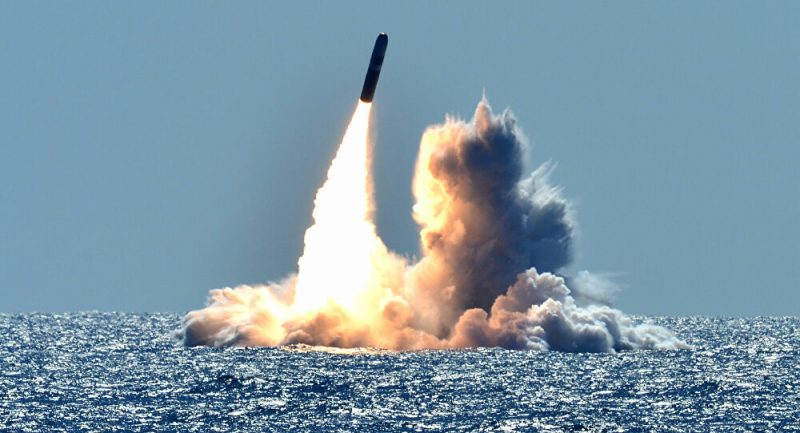As is customary, to give credibility to the British deterrence posture, on January 30, 2024, the British nuclear ballistic missile submarine HMS Vanguard, launched, for exercise, a SLBM Trident 2 D5 strategic missile, off the coast from Florida. This was to travel several thousand kilometers before hitting a specific area in the South Atlantic, previously protected.
Unfortunately for London, and for the Secretary of Defense, who was on board the submarine, this shot quickly ended in a resounding failure, the missile hitting the water after only a few hundred meters. Worse still, this is the second consecutive failure, concerning the firing of a Trident missile by a British submarine.
In this section:
Second consecutive failure for a demonstration firing of a Trident SLBM missile by a British submarine
After the failure of the previous firing, which took place in 2016, the success of the test firing of the SLBM Trident 2 D5 missile on January 30 was of an all the more strategic nature, as tensions with Russia did not have stopped growing in recent months.
In fact, HMS Vanguard, the SSBN nuclear ballistic missile submarine, a 150 meter, 13 ton ship, carrying 000 Trident SLBM missiles, and forming, with the three other ships of the class, the backbone of British deterrence, welcomed Grant Shapps, Secretary of Defense, and the Chief of Staff of the Royal Navy, for the occasion.

As mentioned in the introduction, the test was a pitiful failure. Launched from a firing depth of 44 feet, the missile successfully completed the medium change phase, but a propellant problem immediately caused it to deviate from its trajectory, crashing into the sea a few dozen meters from the ship, which was not damaged by the debris, according to the Royal Navy.
The area, off the American coast of Florida, was naturally made opaque, to allow the US Navy to recover the £17m missile, loaded with highly confidential technology. Let us remember, in fact, that Great Britain uses the same missiles as the US Navy on board its SSBNs, even if London alone has the capacity to arm the nuclear warheads and designate targets for the missiles themselves.
Failures which will handicap the British deterrence against Moscow
As could be expected, the British Ministry of Defense immediately came to minimize the consequences of this failure, explaining in particular, in a very unconvincing manner, that if the shot had been real, it would have happened without a hitch. “The British deterrent remains safe, secure and effective,” the Ministry of Defense said in its statement.

However, whatever the British authorities say, this failure significantly weakens the credibility of British deterrence, especially since London only has this single submarine vector to support its nuclear posture, having given up 30 years ago. years to the air component, against a backdrop of budgetary constraints.

The rest of this article is for subscribers only
The Classic subscriptions provide access to
all articles without advertising, starting at € 1,99.
Newsletter subscription
Register for the Meta-Defense Newsletter to receive the
latest fashion articles daily or weekly


It appears that there is incorrect information in the article.
The submarine's immersion depth is measured in relation to its keel.
The beam of a Vanguard being 12,9 meters and its draft of 12 meters, a shot made at 44 feet (13,4 meters) amounts to making a shot on the surface, which is impossible... or the guarantee of failure.
Probable immersion of approximately 25 meters with 44 feet of water above the silos and a mountain top approximately 5 meters from the surface!!!
Information requiring some clarification I think.
THANKS. It's very sensible. This was what was indicated in the Sun article, but I will remove the depth which seems, indeed, doubtful. Perhaps there is a missing zero, or perhaps it is fathom (breaststroke) which would give a depth of around 80 meters. It seems to me that the British still use this reference for depth.